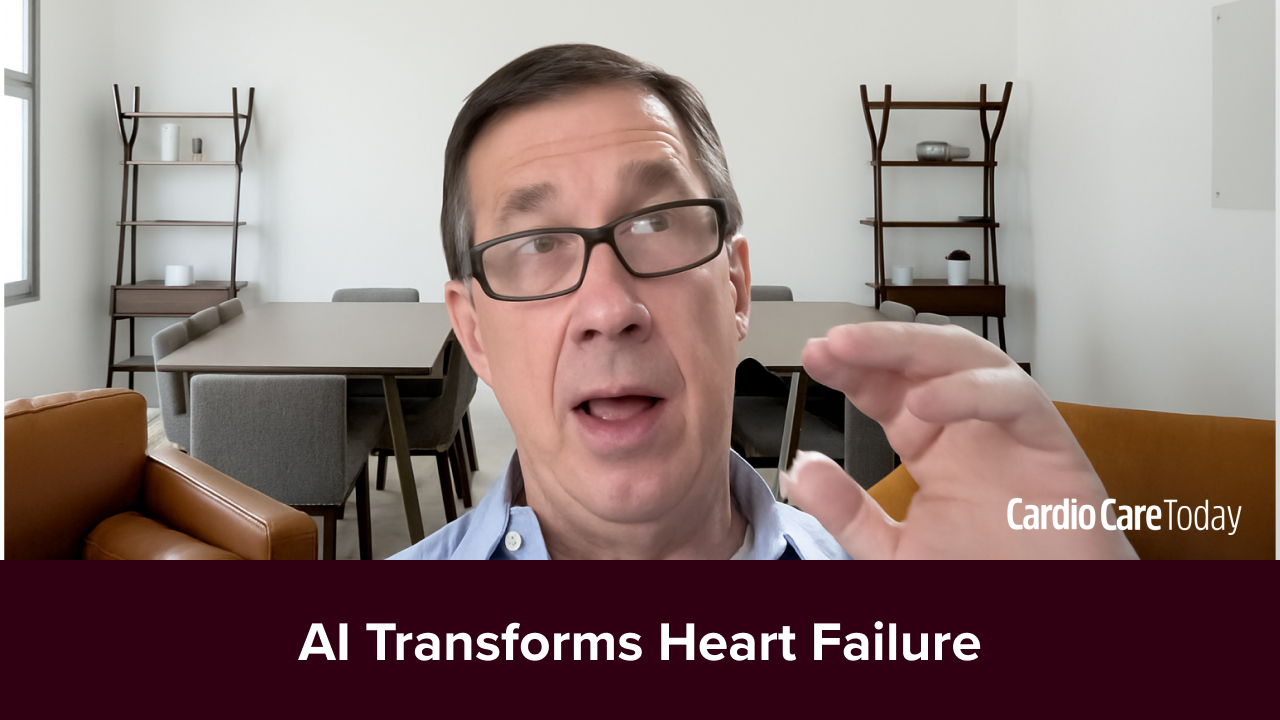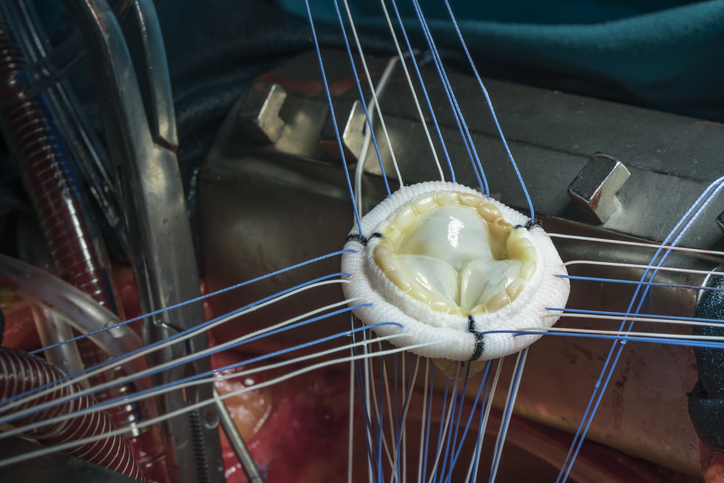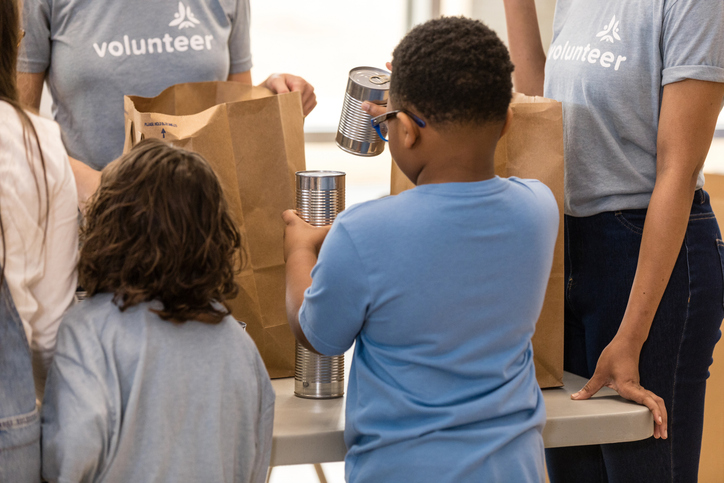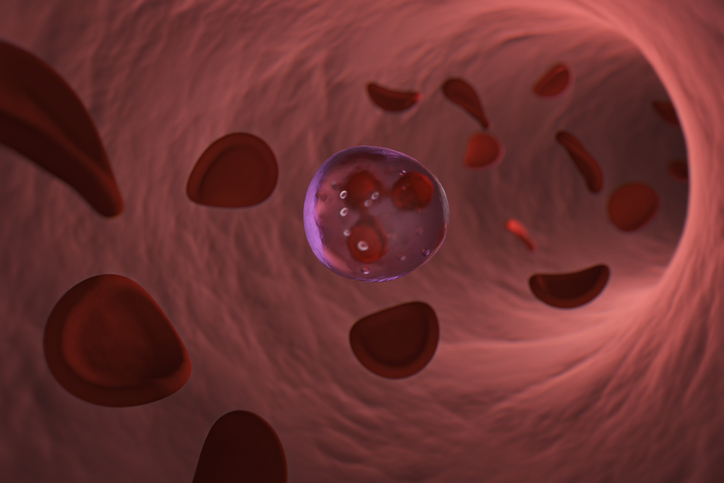CardioNerds at SCAI SHOCK 2022: The PACCS Trial
By CardioNerds - Last Updated: May 2, 2023The Pulmonary Artery Catheter in Cardiogenic Shock Trial (PACCS) was conducted to analyze if early invasive hemodynamic assessment and ongoing management with a PAC in cardiogenic shock patients is associated with lower in-hospital mortality compared to standard of care.
In this interview, Drs. Nick Smith (The Johns Hopkins Hospital) and Julie Power (University of Minnesota) of the CardioNerds spoke with Drs. Dan Burkhoff (Cardiovascular Research Foundation), Manreet Kanwar (Allegheny Health Network), and principal investigator Navin Kapur (Tufts Medical Center) about this important study.
This interview was conducted as part of a collaboration between CardioNerds and SCAI SHOCK 2022, led by Dr. Julie Power, Dr. Dan Ambinder, and Dr. Amit Goyal with mentorship from Dr. Alex Truesdell.
Dr. Nick Smith: Hello everyone. My name’s Nick Smith. I’m currently a fourth-year cardiology and critical care medicine fellow, and I’m chief fellow at the Johns Hopkins Hospital. I’m excited to be here today to discuss the PACCS trial.
Dr. Julie Power: Hello everyone. My name is Julie Power. I’m currently an interventional cardiology fellow and former chief fellow at the University of Minnesota. I did my residency at Allegheny General Hospital and was lucky enough to have Dr. Manreet Kanwar, one of the PIs of this trial as my attending in the CCU several times.
Dr. Nick Smith: I’ll just start introducing our investigators today. So, to start, Dr. Burkhoff obtained his Doctor of Philosophy and medical degrees from the Johns Hopkins School of Medicine and completed a fellowship in cardiology at Johns Hopkins as well. He’s the director of heart failure, hemodynamics and mechanical circulatory support research at the Cardiovascular Research Foundation and an adjunct associate professor of medicine at Columbia University.
Dr. Burkhoff: Hi Nick. Thanks for having me, great to be here.
Nick Smith: Yeah.
Dr. Julie Power: Dr. Manreet Kanwar is in advanced heart failure and cardiac transplant cardiologist at Allegheny General Hospital. She’s been on faculty since 2011. She serves as the director for mechanical circulatory support and cardiac transplant programs at the hospital.
Dr. Manreet Kanwar: Thanks Julie, glad to be here.
Dr. Nick Smith: And last but not least, Dr. Navin Kapur is a dual board-certified interventional cardiologist and advanced heart failure cardiac transplant specialist. He also completed his fellowship at the Johns Hopkins Hospital, and he’s currently the director of the cardiogenic shock working group. So, welcome Dr. Kapur.
Dr. Navin Kapur: Thanks so much for having me.
Dr. Julie Power: Today we will be discussing the pulmonary artery catheter and cardiogenic shock, aka PACCS trial. The title lays out the aims of this trial and hemodynamics are on the forefront for all of us taking care of critically ill patients. Pulmonary artery catheters, once ubiquitous in the critical care setting, declined in utilization after a randomized control trials, like the ESCAPE trial failed to show benefit. However, the benefits of invasive hemodynamic monitoring in cardiogenic shock remain uncertain as the ESCAPE trial excluded cardiogenic shock patients. Dr. Kapur, can you talk about the motivations and background to the study?
Dr. Navin Kapur: Yeah, absolutely. Again, thanks again for the opportunity to join you all today. One of the major motivations for the development of the cardiogenic shock working group is the frustration we all experience in managing cardiogenic shock, which has the persistent in-hospital mortality of about 40 to 60%. We know that hemodynamic abnormalities in cardiogenic shock can range from congestion, hypoperfusion, hypotension and the short-term outcomes are really associated with the severity of the hemodynamic derangement. So, as result, it seems to be intuitive that hemodynamic monitoring would make sense for patients with cardiogenic shock, but the data isn’t there. In fact, up until recently, a lot of the data in cardiogenic shock is focused on acute myocardial infarction as the etiology of shock. But what we’re learning is that many patients with acutely decompensated donegal heart failure or acute on chronic heart failure also may be in cardiogenic shock and the role of hemodynamic monitoring there specifically has not been adequately addressed either.
Dr. Navin Kapur: So, one of the things that we’ve been doing in the shock working group registry, this is an academic research consortium of about 23 hospitals across the U.S. It’s all driven by PIs who are highly motivated because they take care of shock patients. They see the frustration and they need data to really help us understand the problem. One of the areas that we focused on early on in their shock working group is to better understand the hemodynamics of cardiogenic shock and with Dr. Burkhoff and Dr. Kanwar and the other investigators, Dr. Reshad Garan, Jaime Hernandez and Shashank Sinha, we really put our heads together and started to develop a better understanding of the impact of congestion as a profile in patients with right heart congestion, left heart congestion and biventricular heart congestion being very common.
Dr. Navin Kapur: Our next step, we then look at PA catheter use in the registry, which is now about over 5,000 patients. And, what we started to learn was PA catheters, if used early may actually have a better outcome for patients, especially for patients with heart failure as the etiology of cardiogenic shock. A number of investigations were done and actually Dr. Kanwar will presenting these data at the American Heart Association, looking at the shock working group registry data set. But, one of the key elements there was the impact of early invasive versus delayed or no invasive hemodynamic monitoring as two dichotomous approaches to cardiogenic shock management and realizing that if you have the early invasive, you may have a better survival.
Dr. Navin Kapur: It’s really motivated by the frustrations of high mortality in shock. It’s motivated by the fact that hemodynamics plays a cornerstone role in cardiogenic shock, and it’s highly motivated by the lack of data. As you just illustrated, the support trial we’ve had over 5,000 patients in it, the ESCAPE trial, neither of them addressed this particular patient population. And, the ESCAPE trial in particular excluded patients with acute decompensation and cardiogenic shock defined by the need for inotropic vasopressor or IABP support.
Dr. Navin Kapur: So, the PACCS trial will now include all the patients that ESCAPE excluded. And hence, you heard the term “Escape from ESCAPE,” which was nicely coined, I think by Dr. Sinha and the team as that was put out on Twitter. But, the reason that came about is because we really are carving out that shock population from ESCAPE to really help drive the field forward. And, don’t be surprised if we find out that the no-PACC arm does okay. It may be that a right atrial pressure, a right atrial stat, monitoring urine output, lactate, amino suppression and heart rate are sufficient. This is really why, as we all know, trained at Hopkins, embracing the null hypothesis is as important as embracing the central hypothesis. So, we are really approaching this with a lot of rigorous scientific approach to see which end of the hypothesis proved out to be true. So, we’re excited to get the trial started.
Dr. Nick Smith: Dr. Kapur, that’s such a great way to introduce this trial. It’s really exciting as somebody who’s just mainly at the bedside now. I feel like one of my mentors who you know well, Dr. Steve Schulman, a lot of his just bedside commentary rings in my ear as you introduce it. So, I’ll turn to Dr. Kanwar and actually open with a quote that I just remember him saying over and over when he would come into his CCU, and he would have ESCAPE printed out for all of his trainees and he would hand it out and he would talk about PA catheter use in the CCU. One of the things that he always said is he would say, “No one will ever conduct a randomized control trial of PA catheters in cardiogenic shock because no cardiac intensivist will ever allow randomization to the control arm.” I think that it’s really great that we’re actually to that point because I agree, it’ll be very interesting to see how it all shakes out.
Dr. Nick Smith: But, I’ll turn to you Dr. Kanwar and say, he would’ve said that, and I think that it just speaks to the difficulty to enroll patients in a trial like this, and it’s really bold and it’s really an important step. So, how do you think about the enrollment process here, specifically the fact that you’ll have many attendings who have their own practices, who will find randomization particularly, possibly difficult. Then also, just the nature of the patients, you have a very high-stake patient populations, you have vulnerable family members, and you’re going to be trying to obtain informed consent during that process, which will all be difficult. So, how do you anticipate, or do you anticipate any of these challenges and to what degree or do you plan to address them so that we can get a good conclusion at the end?
Dr. Manreet Kanwar: So, thanks, Nick. I think this is a question on the forefront of almost anybody whom we’ve talked to or who has heard about PACCS trial as to either it’s, “Are you our of your mind,” or “Who needs a PACC?” To your quote that you mentioned from your director, I can tell you I was trained at the opposite end of the spectrum. I was taught, “Why would you need a Swan? Why can’t you rely on your physical exam, a good echo and some good lab or other parameters?” We never used a Swan in my training when I was a fellow because that’s just how we were trained. So, to your mentor and to mine, I would say. “That is their opinion.” I think that at this point, we are so many years out of ESCAPE, we’ve been talking about it.
Dr. Manreet Kanwar: In fact, we’ve been demanding our cities in this space on Twitter and wherever else. I think we are at a point it’s almost a moral obligation as I see it, is that we need to move beyond either, “We absolutely believe in PACC,” or “I don’t believe in PACC because I don’t think I need it to… Let the data speak for itself.” I think this is our attempt. We have learned from our registry data. This is an ongoing analysis that we are actively engaged in to see, “Can the registry data, with all its limitations, guide us to where the signals are?” Then, raise a question that has enough equipoise that we would like to now answer with a clinical trial. So, it’s not just a random chance of events that we decided on this question because of course we would be naive enough to… If we think that enrollment will be a walk in the park here, we totally anticipate that we may run into an issue that at the end of it, we realize it is indeed not feasible to enroll in a trial, which is trying to answer this question.
Dr. Manreet Kanwar: But, I do think we have learned a thing or two since ESCAPE. I do think we have a lot of believers or non-believers, enough for us to really, really want to settle this question, not with the intent to show the world that PACCS work, because that would then again make the hypothesis futile. But to say, “Can we, to the best and honest most ways that we know, answer this question with prospective data so that we can take out the ‘in my opinion,’ or ‘in the retrospective review.’” And, yes, we do anticipate these issues. We do understand that there’s going to be a temptation to cross over from the nonrandomized or the control arm to the other arm.
Dr. Manreet Kanwar: We are going to try and capture the number of reasons why somebody who would be otherwise eligible and should have been screened, but then is crossed over. Because of course, you’re not going to dictate to the PIU shall not be able to use the PACCS but crossing over is to be discouraged because that’s a premise of a successful randomized clinical trial. So, we’ll find out. We may find out that indeed it is a feasibility trial that we are not able to do so successfully. But that in itself is, I think, quite telling. I think it’s time we move beyond opinions to data.
Dr. Nick Smith: No, thank you. Thank you for saying all of that. So, I’ll turn to Dr. Burkhoff next. There’s a lot of heterogeneity in cardiogenic shock, and we know this largely due to your work, to the work of the cardiogenic shock working group, multiple recent publications point out that there are many different ways that you can slice the pie, so to speak, of cardiogenic shock. You have SCAI stages. We heard Dr. Kapur. You have patients that progress to more of a cardio metabolic profile. I could really go on. There’s really ever-expanding factorials, and it gets more complicated when you think about age, etiology, whether it’s heart failure or AMI shock, and then you have cardiac arrest as a modifier. So, I guess, Dr. Burkhoff my question to you is, “What plans do you have in place to study the heterogeneity, and how do you think about the tension here between granularity and generalizability, both of which are so important?”
Dr. Dan Burkhoff: These bring up a huge number of points that we ourselves discussed extensively during the design of the trial. I think it’s relevant to talk about some of the recently complete or completed trials and ongoing trials that highlight some of these points. For example, the IABP II shock, IABP shock II study enrolled relatively quickly and was a negative study. And some of the criticisms of this were, “When was IABP put into the patient, what stage of shock? Was it before or after revascularization?” It was all AMI, which was good. “Were they all in shock even?” These patients spanned a very wide range of shock. So there, when you take a lot of patients, you enroll them quickly, and you come up with a negative trial. You’re not 100% sure if that means that there’s no utility of a balloon pump. As you know, as result of that, not everyone in the United States especially has adopted or taken those results at face value. There still is a lot of utilization of IABP.
Dr. Dan Burkhoff: On the other side, we’ve got the DanGer shock trial, which is a randomized study of Impella, which has much more strict inclusion criteria looking at AMI shock, but getting patients early in the course of a disease at a certain stage of the disease and the issue there is a 360 patient study roughly, but now they’re entering into the seventh year of enrollment. So, does that mean that the inclusion and the ratio of number of screened patients to number of included patients is pretty low. So, what will that mean about the generalizability of the results as you pointed out in your question?
Dr. Dan Burkhoff: This is a issue as you point out when you start crossing all the potential factors that impact or that go into characterizing the cardiogenic shock patient, there are too many to control for everything. So, all we can do at this point is do the best we can. In the PACCS trial, first of all, it’s only going to be patients with a shock due to heart failure, either De Novo or a decompensated heart failure. We’re getting the patients at a earlier stage of the disease, shall we say, soon after arrival at the hospital. It’s going to all be standardized. Also, we’re taking patients before they are receiving advanced hemodynamic support.
Dr. Dan Burkhoff: So, all of those things… I know there are lactate criteria and obviously blood pressure and shock criteria that are going to be implemented. So, we can’t control for all of the factors. One mechanism that you could do is start stratifying enrollment. But again, there are too many factors to really stratify against. But all we can do at this point is recruit sites that have the ecopoise that will randomize. It’s very important that patients who meet the criteria are randomized. As you all know, once you start treating patients the way you want and don’t include them in the trial, that introduces bias.
Dr. Dan Burkhoff: So, sites really have to be committed to evaluating the patients and those that meet the criteria are included and randomized. Once you start taking patients and not including them, it has the potential to screw up the populations. So, that’s what we can do. I think that obviously this has not been done before for a reason. I think that they were elucidated very nicely by Dr. Schulman, who anyone who trained at Hopkins gained a huge amount of benefit from his mentorship in so many ways. The thing is that we are at a point now in medicine, in cardiology, where treatment of shock in every way is under a huge amount of scrutiny. The only way to advance this field in a meaningful way that will result in Level 1 a evidence, which is we’re shooting for, is through the gold standard randomized trial.
Dr. Julie Power: Thank you so much, Dr. Burkhoff. That actually dovetails perfectly into my next question. As we’ve been talking about, there’s a history of randomized controlled trials failing to show benefit of pulmonary artery catheters, at least in a more general medicine cohort. Obviously now, we’re talking about cardiogenic shock and that’s why this trial is being done. I think that many cardiologists rely heavily on invasive hemodynamic monitoring and cardiogenic shock. And, this trial makes us all very excited. So, Dr. Kanwar, can you discuss how the results of this trial might change practice models or even enter into the guidelines?
Dr. Manreet Kanwar: Obviously, I can speculate based on again, opinion and then also with some clues we have from our retrospective registry analysis that we’ve done so far. In CSWG, we now have about 3,500 patients of all common etiology that we have outcomes on with another about 1,500 or so expected to be added to that pool within the next few weeks as the next version gets added. It’s a large number of patients, which includes both AMI and non-AMI shock. We’ve looked at what the PACCS data is trying to tell us within their, again, the confines of the registry. But what we can’t tell of course is, “Did a patient not get a PACCS because maybe they were DNR, and we knew that we were never going to proceed to let’s say, temporary mechanical support, regardless of what we find there. Or, we may find out that somebody is poised to be considered for heart transplant or LVAD. And, the intent of the Swan was so they could qualify for advanced surgical options.
Dr. Manreet Kanwar: We can’t tease those things apart in registry. So, if we look at registry data, it’s trying to tell us that yes, PACC does impact outcomes. We are also finding out that those who receive a PACC are also more likely to have other invasive things done to them. They’re more likely to be placed on renal replacement therapy. They’re more likely to be mechanically ventilated, and they are way more likely to receive advanced options, i.e., LVAD and, or a heart transplant, durables, heart replacement therapies in addition to temporary mechanical circulatory support. We are more likely to use more number of pumps, more number of drugs in those patients.
Dr. Manreet Kanwar: So, what we may find is that, yes, PACCS… just the presence or absence of PACCS, first of all, and then the timing of PACCS, I think that is going to be another big potential thing we are hoping to find out is, does early PACC have a different impact than a late PACC. And definitely, PACC preceding temporary MCS decision making. Because, the whole point is, of course, PACC is a diagnostic study. It’s not going to therapeutically do anything to the patient because the data you glean from hemodynamic assessment, how do you use that?
Dr. Manreet Kanwar: We may also find out; we are increasing their length of stay. We are doing more things to people. We are almost over-correcting. I don’t know. We may find out that we are doing things to these patients, which is actually resulting in more morbidity, more length of stay, more adverse events. We are going to be very, very careful in collecting all of this information because the last thing we want to suggest is that a diagnostic study… It has to be tied to a therapeutic endpoints, and we are not dictating the therapeutic endpoints here because that will be a whole different algorithm to say what to do with that PACCS information. So, we may find out that, “Yes, the presence or absence of PACCS impacts outcomes and the outcomes, our primary endpoint is of course, survival or mortality during the index hospitalization, but also various secondary endpoints like mechanical ventilation, renal replacement therapy, advanced options, etcetera. We’ll find out.
Dr. Julie Power: Thanks so much, Dr. Kanwar. I think that the results of the PACCS trial are going to be so groundbreaking and exciting. I can’t wait. I think this trial will really make a difference in the way we approach obtaining hemodynamics and managing cardiogenic shock patients in the future. Dr. Kapur, any final thoughts on future trials that could build off of this one?
Dr. Navin Kapur: I think as Dan pointed out, the trial space right now for cardiogenic shock is a mess. We see a lot of trials that are done that don’t have the granularity that we talked about, don’t have the specifics around which type of patient population we’re targeting, what the therapeutic intervention. And a lot of discussion around what is the right approach here or platform trials, the right way to go, as opposed to basket trials and all sorts of different theories. So, I think for us in the shock working group, our primary mission is to impact patient outcomes by generating meaningful data. It began with the collection of registry data to help us learn about and phenotype and pheno profile. The problem we are targeting, cardiogenic shock. But now, we are beginning to shift towards not only collecting registry data, but now starting to perform perspective randomized control trial.
Dr. Navin Kapur: The PACCS trial is the first endeavor for the shock working group. It’s a fairly high bar that we’re aiming for. We’re a little bit overly ambitious and biting off maybe more than we can chew. But, we’re also very confident that we can do this. The reason we’re confident is that the 23 centers that are involved, they’ve contributed directly to the data set. It’s their data that actually is driving the design of the trial. It’s their data that said that early invasive hemodynamics may be superior to PACC placement after 48 hours. So, that’s how the trial is designed. I think that’s a really important aspect going forward. We are excited to start planning the next trial coming out of the shock working group. There are a lot of ideas being thrown around. So, don’t be surprised if we have within the next 24 months, the second trial from our group.
Dr. Navin Kapur: But, I will say that the PACCS trial, the proof is in the pudding and the pudding begins with enrollment and randomization. So, I’d say we probably will have an update in the December timeframe. We are looking to enroll the first patient this month as the trial is now IRB-approved. The first site is activated. Just as another component of it, in terms of the challenges. At Tufts, the cardiac intensivist is the point guard and our cardiac intensivists, they rotate through all the units. When they’re in the NICU, they don’t use a Swan. When they’re in the CCU, they use a Swan. When they’re in the CTU or cardiothoracic surgical unit, they use a Swan.
Dr. Navin Kapur: So, for them, actually they were very open to the idea of randomizing because they felt very confident that for at least 48 hours, which is the blanking period, that they could manage a patient very effectively and do that without a Swan, targeting all the other parameters we just talked about. So, we think that the challenges are there, but they’re not insurmountable. We’ll have an update soon enough on the PACCS trial. If you have ideas for the next trial you’d like to see, just send us an email. We’d love to think about it, and we’d dig into our own data sets from the registry to figure out if it’s feasible or not.
Dr. Nick Smith: That’s amazing. So, Dr. Kapur, Dr. Kanwar, Dr. Burkhoff, thank you so much for taking the time to discuss this trial with us. Again, the pulmonary artery catheter in cardiogenic shock, aka PACCS trial. We’re super excited to see how everything goes. It’s so exciting that the trial’s looking to enroll as early as this month. So, thank you everyone for your time and thank you.







 © 2025 Mashup Media, LLC, a Formedics Property. All Rights Reserved.
© 2025 Mashup Media, LLC, a Formedics Property. All Rights Reserved.